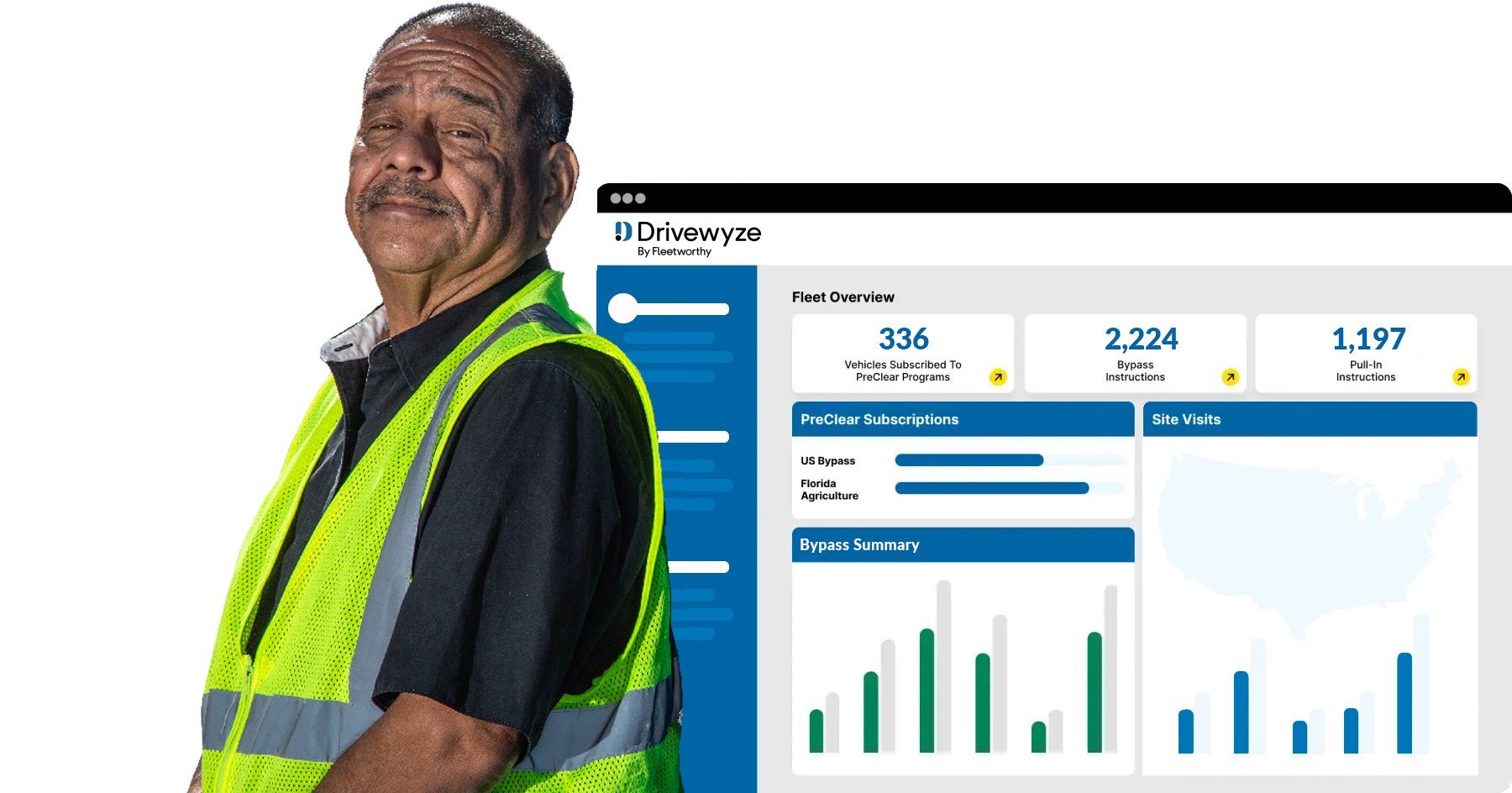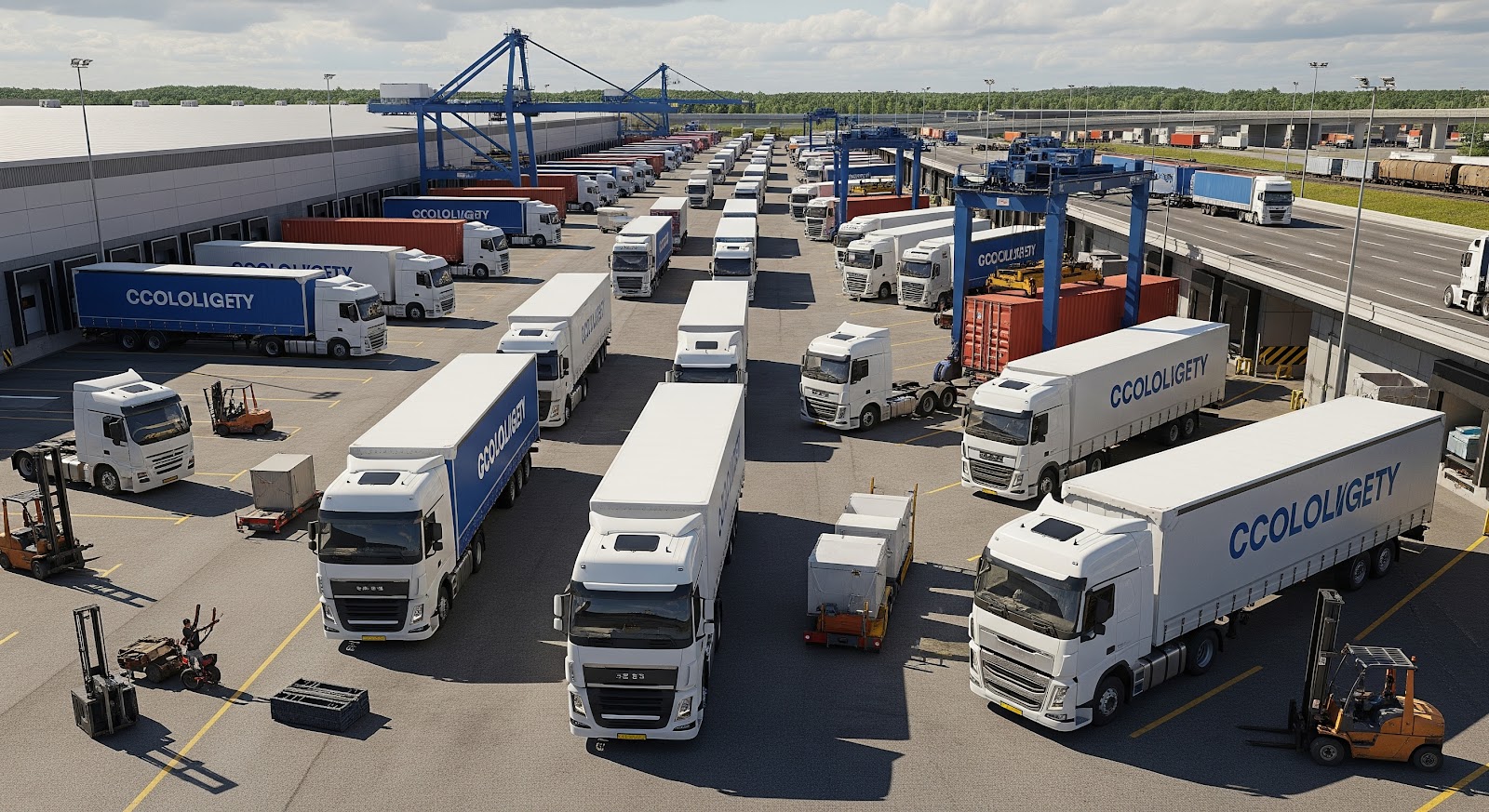The trucking industry plays a vital role in keeping the economy moving, but behind the wheel, many commercial drivers face a growing and often overlooked challenge: truck driver stress. Long hours, tight deadlines, unpredictable road conditions, and regulatory pressures all contribute to elevated stress levels—creating an environment where burnout is common and safety risks increase. According to industry research, a significant percentage of drivers report experiencing high levels of job-related stress, which can impact everything from mental health to job performance.
Stress doesn’t just affect the driver—it impacts the entire fleet. Elevated stress levels can lead to slower reaction times, increased fatigue, and higher rates of crashes and violations. Over time, chronic stress contributes to job dissatisfaction and turnover, making it harder for fleets to retain experienced drivers and reduce recruitment costs. In fact, driver stress has become a top contributor to the industry’s persistent driver shortage problem.
Proactive fleet management strategies are no longer optional—they’re essential. Fleet managers have the power to directly influence driver stress levels by creating a more supportive, efficient, and safety-focused operating environment. From adopting real-time safety tools to improving communication and scheduling practices, implementing stress-reducing initiatives can improve retention, safety scores, and operational efficiency across the board.

Understanding the Causes of Truck Driver Stress
To effectively reduce stress among commercial drivers, fleet managers must first understand its root causes. Truck driver stress is often the result of a complex combination of environmental, operational, and psychological pressures that build over time. Below are some of the most common and impactful contributors:
1. Long Hours and Fatigue
Truck drivers routinely work long shifts, often exceeding 11 hours of driving time per day. Despite Hours-of-Service (HOS) regulations designed to manage fatigue, the nature of over-the-road trucking often leads to disrupted sleep, irregular schedules, and extended time away from home. This chronic fatigue not only diminishes focus and alertness but also wears heavily on a driver’s physical and emotional well-being.
2. Time Pressure and Delivery Windows
Strict delivery schedules and just-in-time logistics add intense pressure to meet deadlines—especially in high-demand sectors like retail or food and beverage. When delays occur due to weather, traffic, or detention at docks, drivers are left scrambling to make up time. This sense of urgency can increase anxiety and lead to unsafe driving behaviors, such as speeding or skipping rest breaks.
3. Traffic Congestion and Unpredictable Road Conditions
Navigating through congested urban areas, construction zones, or rural routes with limited infrastructure adds an element of unpredictability that compounds daily stress. Even with route planning tools, drivers often face sudden slowdowns, detours, or hazardous road conditions that disrupt plans and elevate tension behind the wheel.
4. Regulatory Compliance and Inspections
Staying compliant with constantly evolving DOT regulations, electronic logging device (ELD) mandates, and vehicle inspection requirements adds another layer of cognitive and administrative stress. The fear of being pulled into a weigh station or roadside inspection—especially if it leads to delays or citations—can create an ongoing sense of pressure for drivers.
5. Lack of Autonomy or Communication Breakdowns
Drivers who feel disconnected from dispatch, management, or decision-making processes often experience higher stress levels. Poor communication around route changes, load information, or support for unexpected issues can leave drivers feeling isolated and undervalued. A lack of autonomy in their schedule or decisions also leads to frustration and a diminished sense of control.
6. Poor Parking Availability and Amenities
The shortage of safe, legal parking is a top concern among truck drivers nationwide. When drivers cannot find a place to rest—especially at night—they may be forced to park in unsafe or unauthorized areas, risking fines, fatigue, and personal security. The lack of basic amenities such as clean restrooms or food options only adds to the physical and mental strain.
7. Safety Concerns, Especially in High-Risk Zones
Drivers frequently travel through unfamiliar or high-risk areas with elevated crash histories, difficult terrain, or inclement weather. Without proper support, awareness tools, or situational alerts, drivers may feel vulnerable and unsupported, particularly when navigating dangerous curves, steep grades, or work zones.
This section can now serve as a foundation for emphasizing the value of solutions like Drivewyze Safety+, PreClear, and real-time parking tools later in the article. Let me know if you’d like help linking each pain point to a specific solution in the next section.

The Business Impact of Ignoring Driver Stress
Failing to address truck driver stress doesn’t just affect the individual behind the wheel—it has far-reaching consequences for the entire fleet and business operation. When stress is left unchecked, it can silently erode safety, productivity, profitability, and reputation. Below are the most critical business impacts fleet managers must consider:
1. Increased Accident Risk and Safety Violations
Stressed and fatigued drivers are more prone to errors, slower reaction times, and lapses in judgment—all of which heighten the risk of accidents. These incidents can lead to injuries, equipment damage, cargo loss, and expensive insurance claims. Additionally, high stress levels are linked to more frequent safety violations, whether due to aggressive driving, non-compliance, or missed inspections. Over time, these issues can drive up a fleet’s CSA (Compliance, Safety, Accountability) scores and trigger audits or penalties.
2. Higher Driver Turnover and Recruiting Costs
When drivers consistently operate under pressure and feel unsupported, burnout sets in quickly. Turnover becomes a revolving door—costing fleets an estimated $8,000–$12,000 per lost driver, not including onboarding and training. In a competitive labor market where retention is key, reducing stress is no longer a perk—it’s a critical strategy for building long-term driver loyalty and reducing churn.
3. Productivity Loss Due to Downtime or Disengagement
Driver stress often leads to disengagement—whether it’s through slower performance, frequent absenteeism, or lower job satisfaction. Stressed drivers may take longer to complete routes, avoid longer hauls, or call off unexpectedly. This creates ripple effects across scheduling, delivery commitments, and customer satisfaction. Lost productivity is not just time wasted—it’s revenue left on the table.
4. Brand Reputation and CSA Score Implications
Fleets that consistently operate under high stress conditions may develop a negative reputation among drivers and customers alike. Drivers talk—and if a fleet becomes known for treating drivers as expendable or failing to support their well-being, recruiting becomes even harder. On the compliance side, frequent safety violations can damage a fleet’s CSA scores, affecting everything from insurance premiums to eligibility for weigh station bypass programs. Inconsistent performance or safety issues can also strain customer relationships and contract opportunities.
Addressing truck driver stress isn’t just a human resources issue—it’s a strategic business imperative. The next section will explore how proactive fleet managers can take action to reduce stress, improve safety, and strengthen operational performance.
Proven Strategies Fleet Managers Can Implement
Reducing truck driver stress requires more than a surface-level fix—it demands a cultural shift and the use of smart, driver-focused solutions. Here’s how fleet managers can take the lead in supporting driver well-being while improving safety and efficiency.
A. Improve Communication & Support Systems
Open, respectful communication is the foundation of trust between drivers and fleet management. Poor communication is one of the leading stressors among drivers—often caused by unclear expectations, delayed responses, or lack of empathy.
- Establish Clear, Two-Way Communication Channels: Use mobile-friendly apps or integrated fleet management systems that allow drivers to check in, ask questions, or escalate issues in real-time—without jumping through hoops.
- Encourage Real-Time Feedback and Issue Reporting: Create a safe space for drivers to share road concerns, fatigue levels, or operational challenges. Regular driver surveys or in-app feedback tools help identify pain points before they become bigger problems.
- Provide Dispatch Training to Reduce Friction with Drivers: Equip dispatchers with communication and empathy training so they can manage driver expectations with clarity and respect. The dispatcher-driver relationship can make or break the day-to-day experience for your fleet.
B. Adopt Real-Time Safety Technologies
Stress often comes from unpredictability on the road. By leveraging real-time safety solutions like Drivewyze Safety+, fleets can give drivers the tools they need to stay ahead of risk.
- Use Tools Like Drivewyze Safety+ to Deliver In-Cab Alerts for High-Risk Areas: Drivers receive proactive, location-based alerts about upcoming curves, work zones, congestion areas, and more—giving them time to adjust and stay safe.
- Reduce Mental Fatigue by Automating Situational Awareness: Real-time alerts reduce the cognitive load on drivers by acting as an extra set of eyes—helping drivers avoid decision fatigue during long hauls.
- Help Drivers Feel More Protected and Informed: Knowing their fleet has invested in smart safety tech reinforces the idea that their well-being is a priority, which in turn fosters loyalty and confidence.
C. Streamline Inspections and Bypass Delays
Weigh stations and inspection sites can be major stress triggers, especially for compliant drivers who feel delayed unnecessarily. Tools like Drivewyze PreClear offer a smarter solution.
- Deploy Drivewyze PreClear to Reduce Unnecessary Weigh Station Stops: Eligible drivers can bypass weigh stations based on safety scores, saving valuable time on the road and avoiding unnecessary interruptions.
- Save Time and Reduce Stress Related to Compliance Checks: By reducing the number of inspections drivers have to endure, fleets lower tension around DOT compliance while boosting route efficiency.
D. Prioritize Parking and Rest Support
One of the top frustrations drivers face is finding safe, legal parking. Fleet support in this area can have an outsized impact on stress reduction.
- Provide Access to Real-Time Parking Availability Tools (e.g., Central Park by Drivewyze): Help drivers identify nearby open spots so they can rest without wasting time or violating HOS rules due to last-minute scrambling.
- Plan Routes with Safe, Well-Equipped Rest Stops: Encourage route planning that includes stops with clean facilities, food options, and secure locations—especially on long hauls or through remote areas.
E. Flexible Scheduling and Work-Life Balance
Rigid schedules can exacerbate stress, especially for drivers with families or long-term fatigue. Fleets that offer flexibility build a stronger, more resilient workforce.
- Use Route Optimization to Avoid Excessive Drive Times: Intelligent dispatching and load planning reduce the chances of drivers getting stuck in endless cycles of back-to-back hauls.
- Rotate Long Hauls and Provide Regular Home Time: Home time is a leading factor in retention. Make it a scheduling priority rather than an afterthought.
- Explore Incentive Structures Tied to Health/Safety Behavior: Reward drivers not just for performance, but for practicing healthy behaviors—like taking required rest or reporting fatigue early.
F. Driver Recognition and Mental Health Resources
Driver well-being should extend beyond physical safety. Mental health plays a critical role in stress management and long-term performance.
- Celebrate Safe Driving Milestones or Stress-Reduction Achievements: Publicly recognize drivers who go above and beyond in safety and wellness—whether it’s through bonuses, internal spotlights, or safety awards.
- Offer Mental Health Benefits or Access to Support Resources: Provide confidential access to Employee Assistance Programs (EAPs), mental health hotlines, or telehealth services. Normalize conversations around mental health in driver communications.
Together, these strategies create a supportive ecosystem that tackles truck driver stress from multiple angles—operational, emotional, and environmental.
Technology isn’t just a back-office tool—it’s a frontline ally in the battle against truck driver stress. Integrated platforms, real-time alerts, and automation tools are helping fleets simplify operations, enhance safety, and create a less stressful experience for drivers behind the wheel.

Ready to Get Started?
Learn how North America’s leading carriers use Drivewyze to save money and improve safety.





